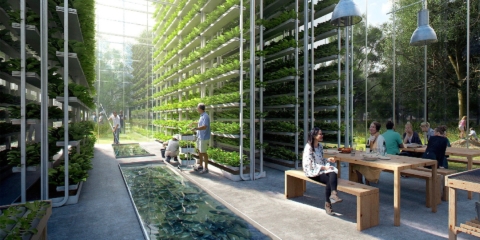Would you like to get notifications from Christian?
OpenAI researchers have created a new system that can produce a full image, including of an astronaut riding a horse, from a simple plain English sentence. Known as DALL·E 2, the second generation of the text-to-image AI is able to create realistic images and artwork at a higher resolution than its predecessor. This new AI tool is an update to OpenAI's original DALL-E system, which was only able to generate lower-resolution images. With DALL-E 2, the team has pushed the limits of what the AI can do with text input. In addition to creating images from scratch, DALL-E 2 can also change the point of view of an image, making it appear as if you are looking at it from a different angle.
The OpenAI team believes that this technology could be used to help people communicate their ideas more easily. For example, if you're working on a design for a new product, you can simply describe it to the AI and it will generate an image of what it looks like. This could save a lot of time and effort in the design process. What's next? The OpenAI team is continuing to work on improving the accuracy and resolution of the images produced by DALL-E 2. They also want to add more features, such as the ability to generate images from 3D models. OpenAI believes that this kind of technology could eventually be used to create 3D models from natural language descriptions or to generate images of objects that don't exist in the real world. The team plans to continue improving the system, with the ultimate goal of creating an AI that can generate any kind of image or 3D object from the text.
Christian is a futurist and trendwatcher who speaks about the impact of exponential technologies like AI on organizations, people, and talents. Christian tailors his presentations to your audience's specific industries and needs.



Our world is changing at an exponential rate! A big tidal wave of digital transformation and disruption is coming at us fast. Many organizations see this wave as a threat and experience stress, but there are also organizations that just see this wave as an opportunity.

Imagine sitting with just 10-15 fellow executives at a premier location, gaining clarity on the impact of AI on your industry while enjoying an exquisite dining experience. These are not just meetings—they are transformative moments that will shape the future of your organization



In the future, 3D printing and generative design will allow for products to be designed in a more decentralized manner, and production will take place closer to the customer and fully on-demand. 3D printing technology will also allow for more customization and personalization of products.


The agricultural industry is ripe for disruption. Robotics, AI, and IoT are all technologies that have the potential to radically transform the way we grow food. In combination with vertical farming, these technologies could increase the efficiency and quality of agricultural products.

A human-centered society is one that puts people first and where technology is used to unite and empower people. It is a society that values biological life and dignity above all else. It is a society that recognizes the importance of human relationships and works to strengthen them. In a human-centered society, all members of the community are valued and treated with respect.


The future of healthcare is here. New technologies like AI, IoT, big data, and smart sensors make it possible to become the CEO of your own health. Imagine that your phone can listen to your voice and AI algorithms can detect small nuances in the tone of your voice that indicate specific diseases.
